Pennsylvania In Person with Jim Morrison of the National Christmas Center
Wendy S. Royal Winter 2015
When I sat down with Jim Morrison for the winter 2008 issue of Where & When, Pennsylvania’s Travel Guide, I had no idea how my visit with this gentle spirit would lift mine. Getting to know the man behind the museum made my experience at the National Christmas Center in Paradise, PA so much more special.
W&W: Where did you grow up?
Morrison: I grew up in Haddonfield, New Jersey, but we used to drive through this area to go to my cousin’s farm in York.
W&W: Why did you select Lancaster for the National Christmas Center?
Morrison: In collecting from all over the country I realized that so much of the American Christmas started here. The first documented Christmas tree was in 1821 in Lancaster. The guy who gave coal to the naughty children called Belsnickel came from Lancaster. Mr. Woolworth came to town in 1879. He talked into selling glass ornaments at a time when you could be fined for celebrating Christmas because of the Puritan influence. His ornaments were sold out, by the Pennsylvania Germans of Lancaster. The PA Germans brought the Christmas tree here, there were more candy makers here and candy was a gift at Christmas. Of the first 13 printings of ‘Twas The Night Before Christmas, written in NY city, nine of them were printed in Philadelphia. The Germans really caught on to that. The Moravians in Pennsylvania brought the Christmas Gardens and the Putz to us. The American Christmas started here. It was the German influence in this area that us brought us Christmas. The toys were made in Germany the glass ornaments were made in Germany.
W&W: Where are you currently living?
Morrison: Here. This (the museum) is my home. This place is my life.
W&W: Do children confuse you with Santa?
Morrison: Sometimes, but I’m Santa, Jr. Daddy’s at the North Pole. When I grow up I want to be Santa.
W&W: What kind of reception do you get from the kids?
Morrison: They come up and hug me because I’m not a stranger to them. They know me. It’s really great to see their faces when I thank them for the cookies and tell them how proud I am of them. They believe in me and that is the most rewarding feeling.
W&W: Were Christmases special in the Morrison household?
Morrison: My mother grew up in the coal region where they didn’t get a lot. So she made sure our Christmas was very special. She’d start baking right after Thanksgiving. Gifts would be piled high. My parents made a lot of sacrifices. I’d go to bed on Christmas Eve with an empty stocking and I remember trying to get my parents up at 6 am and my father had just gone to bed. My parents even hid the tree in a neighbor’s garage because Santa brought it. And it was magic. Family would come for breakfast with their kids.
W&W: Other than Christmas morning, what are some of the memories of the season that stand out to you?
Morrison: The magic of the store windows in Philadelphia. All the stores had something, There was a Punch and Judy Show at Lit Brothers, and I remember the windows of Strawbridge’s. The window at 8th and Market always had elves and toys. This was before television.
W&W: Is there one particular Christmas from your childhood that stands out to you?
Morrison: They all do. Going to school, making cards and presents and coming home with my little bag of gifts to give out. I remember going out two weeks after Christmas and going through the Christmas trees that my neighbors had thrown out. I would pull off tinsel and glass ornaments that were left behind. I even had my own tree with my own ornaments on my bureau. I’d go to bed with all the beautiful blue, red and gold lights on. I’ve always collected things.
W&W: Do you remember what your first collection piece was?
Morrison: I was nine months old when my aunt gave me a Streamline Train and it’s out in the case (in the museum). How she knew I would love trains I don’t know. I would watch that thing go around and around. I built an exhibit that looks like you’re standing under a Christmas tree. It’s that childhood memory. The museum is about those memories. I remember looking in the Woolworth’s and they had St. Nicholas light bulbs that were 34¢ and I didn’t have the money. But I got some money that Christmas from my aunts and I went back the day after Christmas and they were marked down to 17¢ and I bought all nine that were left. And they are here too. This museum is all about the fantasy of Christmas.
W&W: Do you think that Christmas has lost some its magic for kids today?
Morrison: It certainly has. I’ve seen Christmas trees in the trash as early as Christmas day. Parents need to listen to their children. I’ve had thousands of children sitting on my lap and when I ask them what they want for Christmas it’s never more than two or three things. When I ask them what they like most about Christmas, they never say the presents. It’s always, going over to Grandma’s, baking cookies, my cousins come over and those kinds of things. Parents, grandparents, listen to your child.
W&W: There is so much to see here. Do you know how many pieces are at the national Christmas Center?
Morrison: No. I have no idea and it really doesn’t matter. New pieces are brought in every week.
W&W: What would you consider to be the “Holy Grail” of Christmas collectibles?
Morrison: We were asked to go on the Martha Stewart Show to talk about the most expensive Christmas ornament. There are some very expensive pieces. I sold a glass ornament for $1,300 once, but it’s just a piece of glass. To me the most important thing is that every single thing here was loved and put away and brought out each year. Everything is precious because someone treasured it. I guess I would have to say that “Holy Grail” here is a little tin horn, that I bought 30 years ago. I spent all day at auction and had to buy a whole table of items just to buy this one thing because wrapped up in this little horn was a note that said, “Brother Walter Lukes little horn used in a Christmas play 1906. Has always hung on Grandmothers tree. Has hung on my tree since grandma passed away. So somebody please hang it on your tree.” So I built this place for that little horn. I built this place for these children and for the memories.
W&W: What do you see for the future of the NCC?
Morrison: What I’d love to do is add on to the building. I could double the size of the place.
W&W: The last exhibit that visitors see before leaving, is the nativity. Were you trying to leave people with these images before leaving?
Morrison: Christmas is the birth of Christ. Some people have forgotten that but I can’t tell you how many people, after going through the nativity have said they are going to go up in the attic and getting grandmother’s nativity and putting it out. I remember the shows at Radio City, where the three Kings had 40-foot trains (on their cloaks). Well these kings walked through the dirt for months and were filthy. We wanted to do the reality of the birth of Christ so we built a cave. We show the humbleness. We take the visitors from Nazareth to Bethlehem.
W&W: How rewarding is this for you?
Morrison: You come to the end of your life. You reach 30 and 40 and you wonder why you’re here on earth. Now I know why. Everything I’ve done in my life has led to this. Every path I’ve taken. It has all prepared me for this. How many people can say their dream has come true.
W&W: How much of this museum is because the influence of your parents?
Morrison: It’s all because of them. I am my parent’s son. I just wish they were here to see this.
After the interview he gave me a guided tour of the amazing facility. As we were just finishing up a little boy came into the museum with his family. I’ll never forget the way his eyes lit up immediately upon seeing my host. Morrison sat down on a bench and invited the little boy to sit and talk for a bit. I watched along with the little boys parents as he reached in the bag he was carrying and offered Morrison a cookie from his Happy Meal®
The two talked and as I watched I realized that it wasn’t the beard, the protruding belly or even the color red that Mr. Morrison dons daily that makes children believe they are in the presence of a magical being. It’s what’s in they eyes of the man they are trusting their wishes to. They see goodness and probably most importantly, they see themselves…someone who truly believes in the magic and wonder of Christmas.

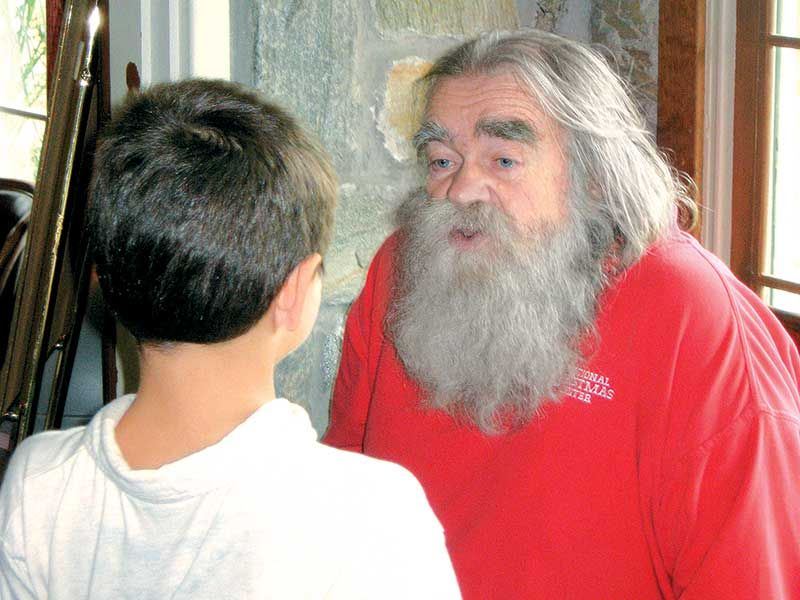
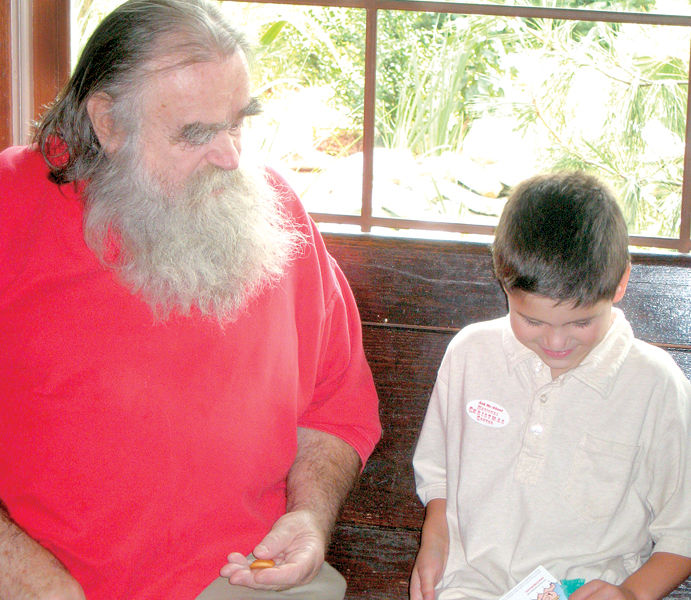
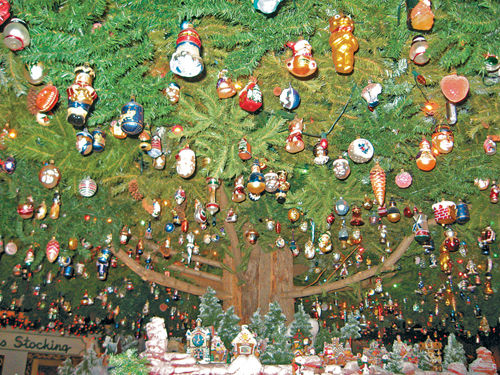
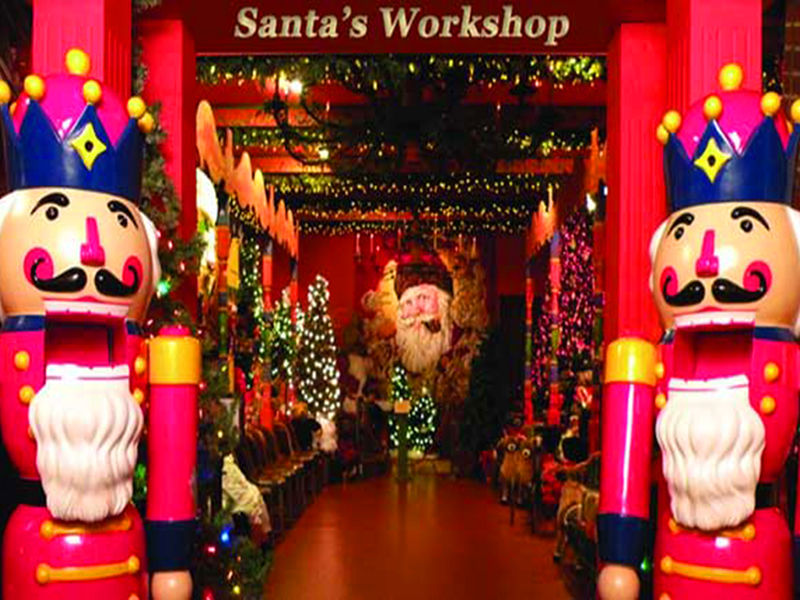
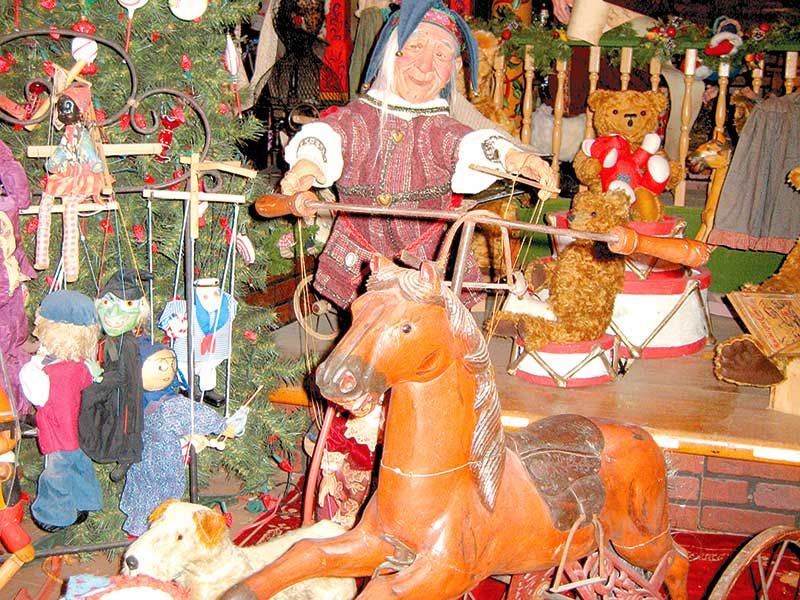
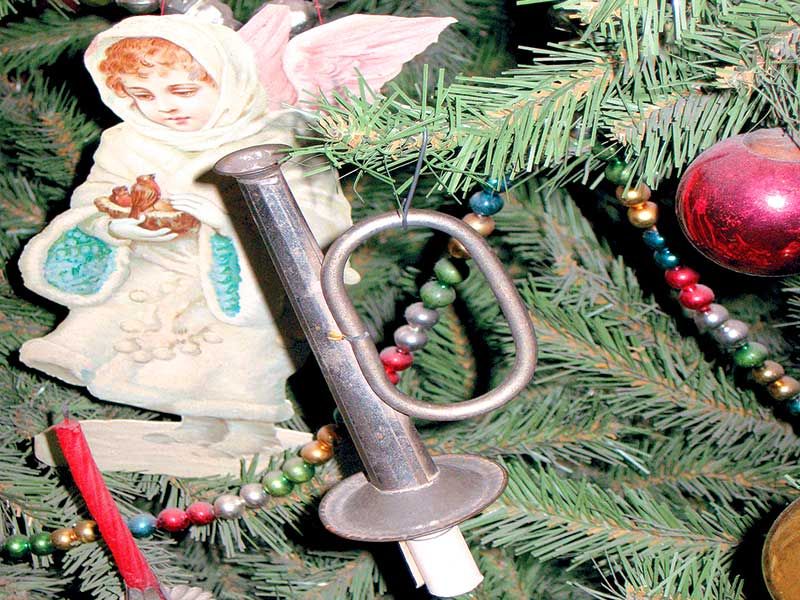
SHARE
PRINT